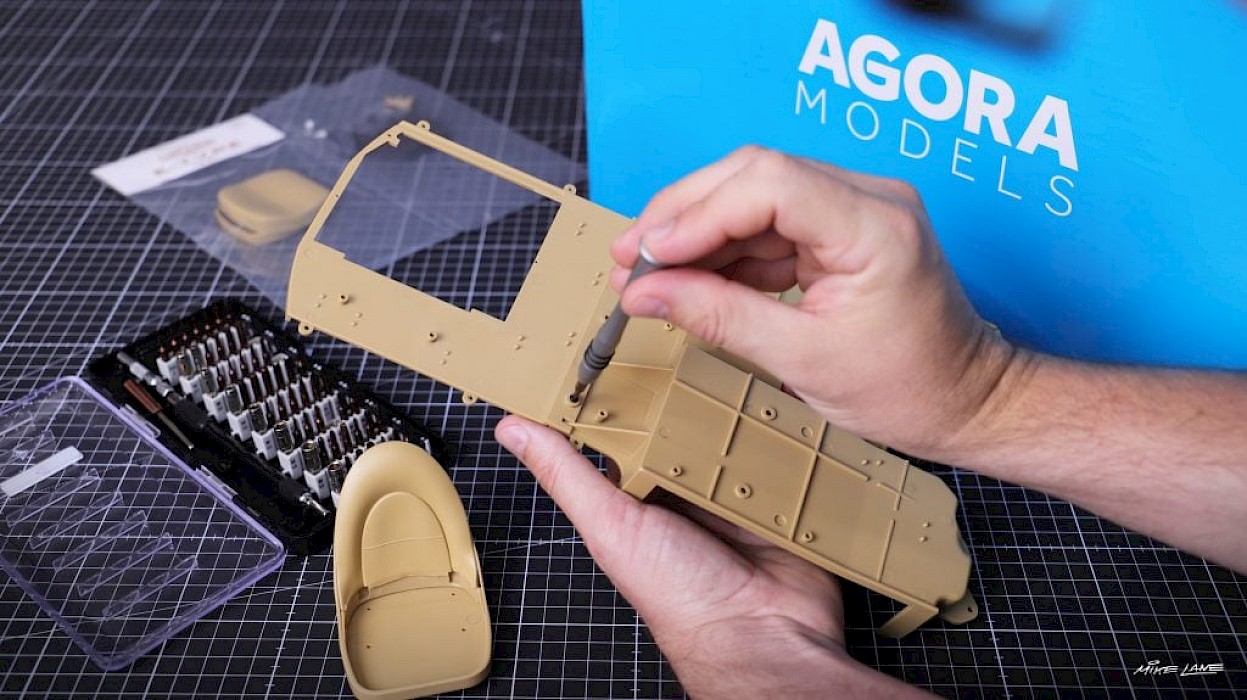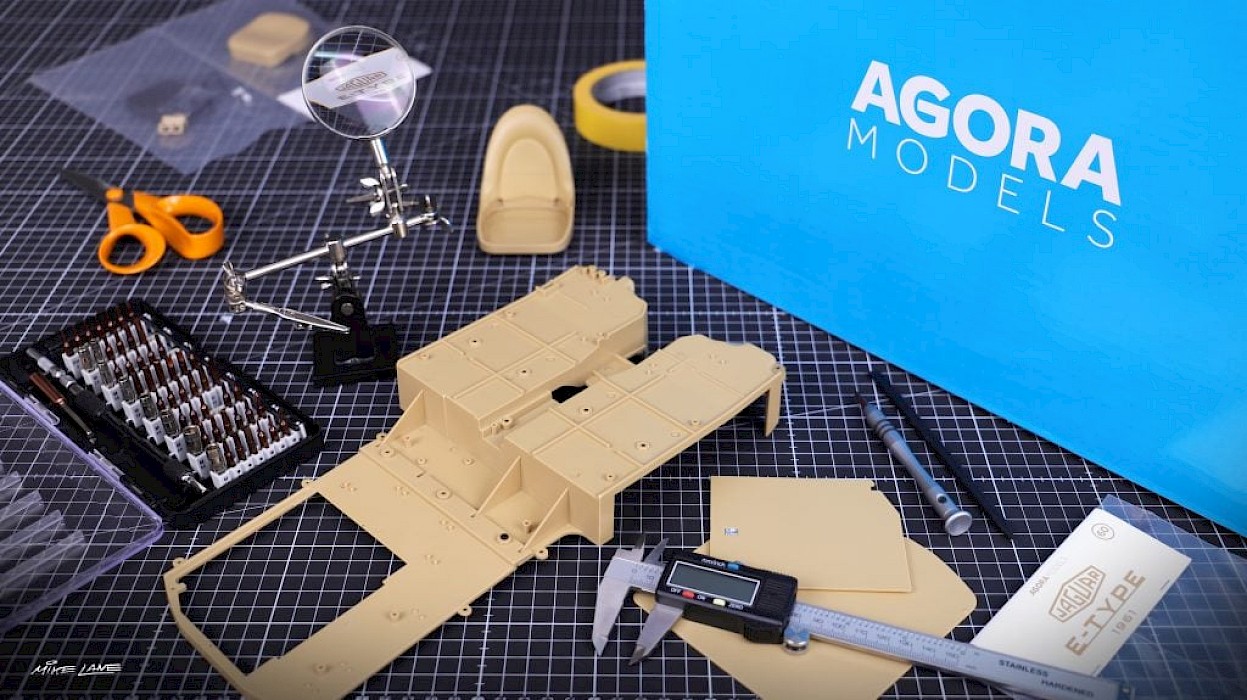Top Tools for a Big-Scale Modeller
They say that a poor craftsman always blames his tools. And, whilst having the right tools won’t necessarily make you a modelling Jedi overnight, it can certainly help to make your build that little bit easier – and perhaps even more enjoyable too! And whilst not exclusive to big-scale models, there’s no doubt that having access to a few useful extra tools can make a world of difference.
That’s not to say that a vast arsenal of specialist gear is needed for this hobby. The beauty of big-scale models is that almost anyone can pick them up with a minimum of equipment and experience – patience and dedication will always prove the most important assets to bring to the table. And with big-scale builds, the bare essentials – such as a basic screwdriver and tweezers – are often provided with the kits, so in theory you shouldn’t need anything else.
However, surrounding yourself with a few additional, quality tools is something I’d highly recommend. There are some in particular which will go a long way in helping to make your build-up simpler, more efficient, comfortable and enjoyable.
I’ve tried and tested more tools than I care to count. Some haven’t delivered on their promise while others have been worth their weight in gold. With time and experience, I’ve boiled these down to a small selection of tools which I can wholeheartedly recommend to anyone working on, or considering undertaking, a big-scale model. So, without further ado, here’s my A-Team of useful tools:
Tweezers
With so many fiddly tasks to perform at virtually every stage of a scale model project, having a set of decent tweezers makes life so much easier. A set of mini pliers can also be handy at times, but tweezers are something every modeller should have to hand. I’d recommend getting a good set of assorted precision tweezers, often marketed as anti-static tweezers for electronic applications but also really useful for modelling. They’re typically sold complete with a range of shapes – the fine-point ones are great for any number of awkward jobs, while the curved ones are handy for tasks like holding screws and applying stickers.
Craft blades
A good sharp blade is invaluable for a multitude of jobs, whether it’s cutting away plastic burrs, adjusting parts for a better fit or preparing and applying decals or stickers. Whilst it may be tempting to reach for a more common retractable utility knife, investing in a decent set of craft knives will make life a lot easier when working at smaller scales. Craft knives are less bulky, nicer to grip and easier to control – meaning fewer slip-ups and more accurate cuts. A decent set of precision craft knives is inexpensive and often includes a selection of different shaped blades – which you’ll find useful in all manner of situations during your build.
Helping hands
These ingenious contraptions can be a modeller’s best friend and are great value for money. With their crocodile clips and articulated arms, they allow you to securely hold components of your model exactly where you need them while you work – particularly useful when gluing or working on intricate details. Plus, they have a powerful integrated magnifying glass, helping you see finer details with ease. Helping hands can be convenient tools for the more fiddly stages of your partwork build – and they really come into their own if you delve into the world of modding your model.
Glues
Part of the appeal of a big-scale build is that most components will screw, click or slot together without any extra help – however, the time may come when gluing is called for, whether it’s for securing an overtightened screw, strengthening a fixture or repairing an accidental breakage. And when it comes to modelling, not all glues are made equal. Super glue (I’d recommend Loctite) is ideal for fixing surfaces in the vast majority of cases. But where clear plastics are involved, super glue can cause fogging – here, you should use a solvent-free glue (Humbrol Clearfix adhesive is ideal). And whilst rare in scale models, attaching wooden components is a whole other ball game – always use a wood glue for this task (such as Evo-Stik Wood Adhesive). Having a bottle of super glue de-bonder to hand is also advised. This can be useful for tidying up areas around parts where super glue may have spilt, or for releasing fingers!
Sanding sticks and sponges
For smoothing off rough edges of burrs on plastic items, I’ve always found small sanding sticks and sponges better to use than sandpaper. They’re rigid enough to reach where they’re needed, flexible enough to curve around surfaces, and they spread the force, reducing the risk of damaging your model through over-sanding. Both these items are pretty cheap and easy to come by, and can be bought in a range of grades, although I almost always use the fine grit options. Sanding sponges can be easily cut into sections to suit the task – small triangles can be useful for getting into tricky corners. A set of metal mini files can come in handy too for any tougher tasks involving metal, such as levelling protruding screws or sharp, exposed parts.
Digital vernier calipers
This gadget is a very useful thing to own. It can measure both internal and external distances with a high level of accuracy – great for scale models. There’s always plenty to measure and cut in a partwork project, and this makes child’s play of these tasks. It’s also ideal for identifying the correct sized screws when faced with a mixed bag partway through your build.
Spudger
This simple and underrated (and brilliantly named) little tool is an indispensable asset for the model hobbyist. It can be used for prodding, wedging, scraping and any other small-scale manipulation you care to think of. It’s ideal, for example, when you need to push a part into a small gap or peel off a sticker – being made of nylon, it’s softer than most materials on your model, so you can put it to work without risk of scratching surfaces. A spudger can also be called into action for applying rub-on transfers when you don’t have a pencil to hand (or just want to avoid graphite smudges).
Modelling hand drill
This might seem an extreme tool for a partwork model. But I’ve found that even for basic builds, it can be really useful to have a drill to hand for enlarging screw holes, particularly in metal parts, which can be on the tight side at times. It can also rescue your build from a sheared or damaged screw that may need drilling out. A modelling hand drill set need not cost you a small fortune. Sets tend to come with a variety of drill bit sizes in a compact package and can be a handy addition to your arsenal of tools.
Good lighting
Working at a small scale requires that you can see clearly what you’re doing, and decent lighting is important, especially if you’re working on your model in the evenings. Perhaps the most important thing is that if you don’t have bright overhead light, then it’s a good idea to use a lamp which directs light exactly where you need, which is flexible and which isn’t going to get in the way. Lighting is a personal choice but my personal recommendation would be a daylight LED desk lamp. I find that these are less strenuous on my eyes than other lighting. They also give good colour accuracy – particularly important if you’re painting and trying to colour-match parts of your model. For extra functionality, you might want to consider magnifying LED lamps, which often come with different colour temperature options too.
Worktop organisers
It sounds obvious but can be easily overlooked – having good solutions in place for managing and storing small items is a must. Misplacing small screws and parts can be a major headache, and in the wrong place can scratch or dent your model. I use a screw organiser, which saves a lot of rummaging when I need to select the right screw and proves useful in keeping small parts safe between issues of a partwork build. I’m also a big fan of the magnetic bowl and mat – simple but effective items for stopping screws and other small metal items going astray while working on projects.
Self-healing cutting mats
These are great for protecting your work surface when cutting, gluing or painting during your build. They usually come with metric and imperial grids printed on them too, so they double up as a quick-and-easy measuring tool. I use an A2 size mat, and would recommend you get one at least this large if room allows. The extra working space will always be welcome as you progress through your build.
Even though none of these tools are strictly-speaking essential, in my experience these are the most useful items you can have to hand when building a big-scale model. You may have favourite pieces of kit in your own arsenal that I haven’t mentioned – but these pieces are the trusty tools I couldn’t do without. A few well selected tools like these needn’t set you back a huge amount of money – but I can assure you that your model-making experience will be greatly enriched by them.
Mike Lane creates bespoke, hand-crafted upgrades and accessories for a selection of partwork models. You can see his work at mikelanemods.com.


